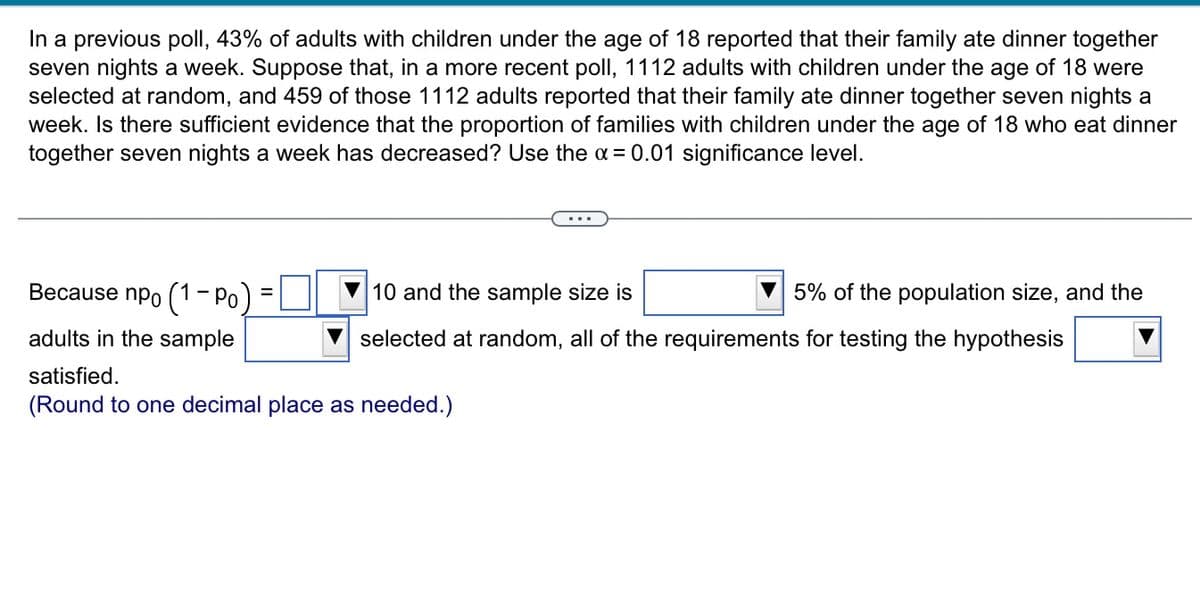In a previous poll, 43% of adults with children under the age of 18 reported that their family ate dinner together seven nights a week. Suppose that, in a more recent poll, 1112 adults with children under the age of 18 were selected at random, and 459 of those 1112 adults reported that their family ate dinner together seven nights a week. Is there sufficient evidence that the proportion of families with children under the age of 18 who eat dinner together seven nights a week has decreased? Use the a = 0.01 significance level. ... Because npo (1- Po) 10 and the sample size is 5% of the population size, and the adults in the sample selected at random, all of the requirements for testing the hypothesis satisfied. (Round to one decimal place as needed.)
In a previous poll, 43% of adults with children under the age of 18 reported that their family ate dinner together seven nights a week. Suppose that, in a more recent poll, 1112 adults with children under the age of 18 were selected at random, and 459 of those 1112 adults reported that their family ate dinner together seven nights a week. Is there sufficient evidence that the proportion of families with children under the age of 18 who eat dinner together seven nights a week has decreased? Use the a = 0.01 significance level. ... Because npo (1- Po) 10 and the sample size is 5% of the population size, and the adults in the sample selected at random, all of the requirements for testing the hypothesis satisfied. (Round to one decimal place as needed.)
Chapter8: Sequences, Series,and Probability
Section8.7: Probability
Problem 4ECP: Show that the probability of drawing a club at random from a standard deck of 52 playing cards is...
Related questions
Question
Please find the null and alternative hypothesis as well, p value and z score

Transcribed Image Text:In a previous poll, 43% of adults with children under the age of 18 reported that their family ate dinner together
seven nights a week. Suppose that, in a more recent poll, 1112 adults with children under the age of 18 were
selected at random, and 459 of those 1112 adults reported that their family ate dinner together seven nights a
week. Is there sufficient evidence that the proportion of families with children under the age of 18 who eat dinner
together seven nights a week has decreased? Use the a= 0.01 significance level.
Because npo (1- Po)
10 and the sample size is
5% of the population size, and the
adults in the sample
selected at random, all of the requirements for testing the hypothesis
satisfied.
(Round to one decimal place as needed.)
Expert Solution
This question has been solved!
Explore an expertly crafted, step-by-step solution for a thorough understanding of key concepts.
This is a popular solution!
Trending now
This is a popular solution!
Step by step
Solved in 2 steps with 2 images

Recommended textbooks for you


Holt Mcdougal Larson Pre-algebra: Student Edition…
Algebra
ISBN:
9780547587776
Author:
HOLT MCDOUGAL
Publisher:
HOLT MCDOUGAL


Holt Mcdougal Larson Pre-algebra: Student Edition…
Algebra
ISBN:
9780547587776
Author:
HOLT MCDOUGAL
Publisher:
HOLT MCDOUGAL